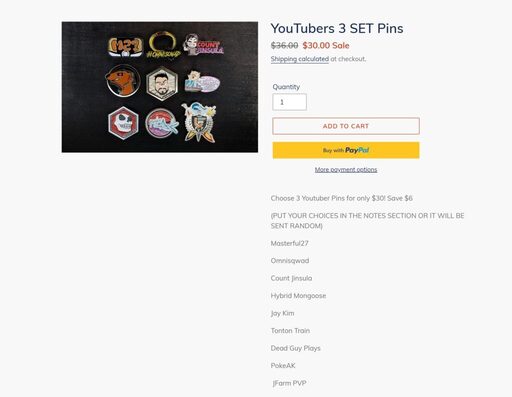

You’ve designed the pin, we’ve proofed the concept, and now, the production’s finished. Time to price your custom pins for retail. But at what cost?
Set the price too high or too low, you’ll end up limiting both buyers and profits. Thankfully, AllAboutPins is an industry veteran in the custom pin business and we’re ready to help. While there’s no secret formula for perfectly pricing your custom pins for the market, these tips can help cover the most important considerations.
When setting your pricing, knowing the cost of production is probably the first thing you’ll consider. It goes without saying pricing your goods higher than it cost to produce them will lead to profit and if you can cut production costs further you’ll make a bigger profit right? Yes, but don’t cut so many corners that you begin degrading the actual quality and value of your product. Customers are willing to pay for quality when if it comes with a cool design or a unique flair.

That said, don’t be afraid to simplify a pin design to lower production costs. At AllAboutPins, the biggest factors going into your production cost includes the quantity and type of pin you’re designing, the size of your pin, and any unique customizations such as glitter paint or cardstock.
Here are a few tips for getting more out of your production costs:
Researching how the competition is pricing their goods is a great starting point for healthy market research of your own pricing plan. Knowing how much your competitors are charging gives you a benchmark for determining how to price your own designs cheaper or more expensively depending on how you’re setting yourself apart.

However, don’t get too hung up on trying to bet a competitor’s prices or setting your products at the same value. It’s a perfectly acceptable business model to cut costs or offer a lower price to try and beat out the competition. Alternatively, it can be just as effective to go for higher-quality pins like our cloisonne option to price your designs for elevated quality.
You know your costs and you know the value of your competitors. Time to set a price for your own goods. If you’re simply looking to price for a straight profit, then check what the Entrepreneur calls “Cost Pricing.” With cost pricing, you add up all of your total expenses including both direct and indirect costs associated with your custom pins, then add a profit on top of that initial figure. Simple and straight-forward, cost pricing is a great starting point and allows you to focus on adjusting your pin’s profit margins based on the market around you.

A profit margin is a gross profit you earn for each custom pin sold. Say, the unit cost of each pin took $5 to make and you sell each individual pin for $15, you’d have made a gross profit of $10. As far as setting a profit margin goes, we’ve found sellers on Etsy and Facebook marketplace often price their products as low as $8 a unit or even as high as $20 depending on the style, customization, and perceived value of the pin. We’d recommend starting at $10 USD for 1” or 2” pins and adjusting as needed based on your custom pin design and the market.
Whether selling designs of your original artwork or building an existing brand, we hope this guide helps you get to build a pricing model that works for you. Need help working on the design or look of your custom pin? Check out some of our other articles on designing each aspect of your custom enamel pins with AllAboutPins: